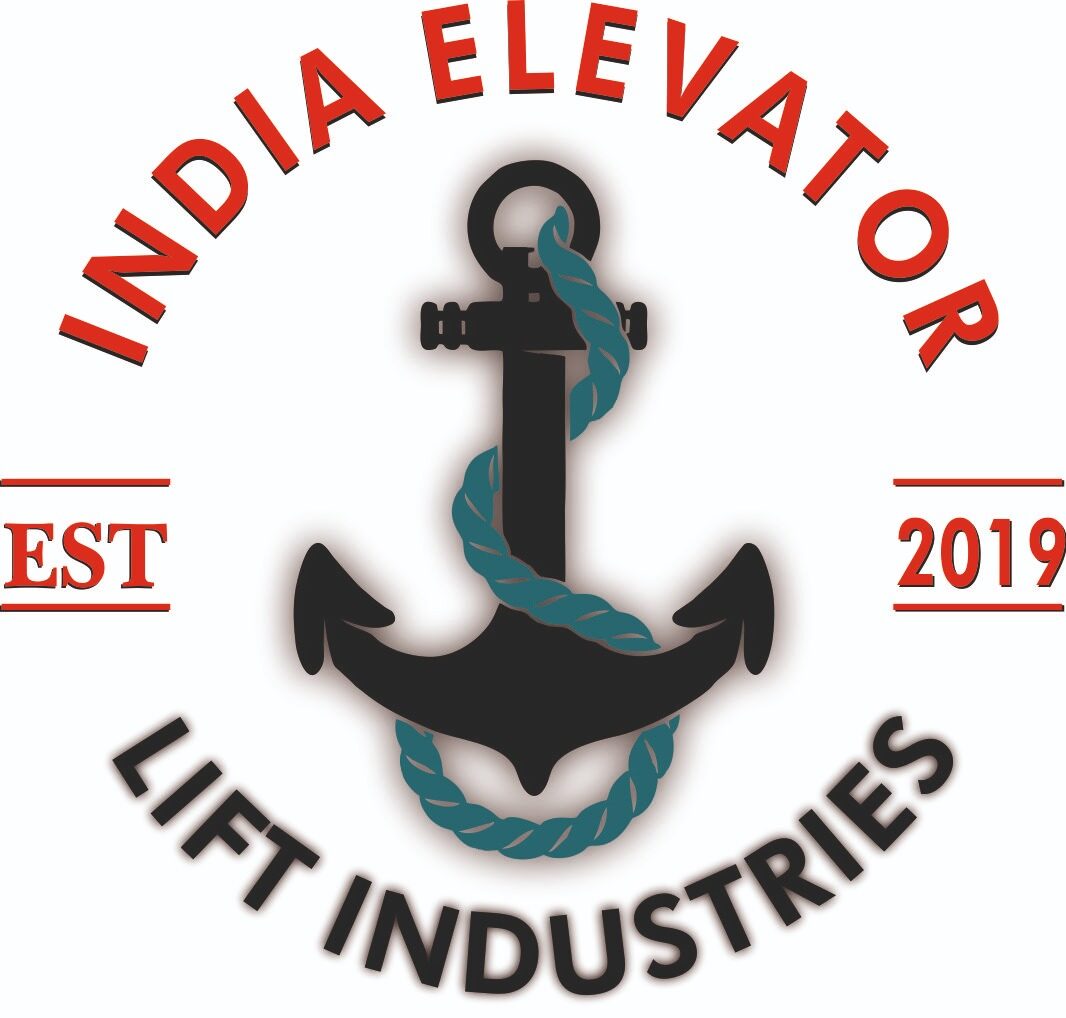Conveyor Lift Manufacturer
conveyor Lift manufacturer are a type of conveyor system that is designed to move materials or products vertically. They are often used in warehouses, distribution centers, and manufacturing facilities to transport items between different levels of a building or facility. Lift conveyors can be either manual or automated, and can be designed to move a wide range of materials, including boxes, pallets, and other bulk items. Some lift conveyors are also equipped with safety features, such as barriers or guards, to protect workers from hazards. Overall, lift conveyors are a useful tool for increasing efficiency and productivity in material handling processes.
Conveyors lift are devices which enable changing the height of handling during operations. They can include any types of conveyors: chain, roller, strip, and belt conveyors. Lifting devices make it possible to: lift, reverse, and tilt handled items. Within a production line, lifting conveyors make it possible to: combine two transport lines, change the transport direction, and change the orientation. This energy-efficient vertical transfer automated warehouse conveyor systems are largely used in production units and distribution centers for raising or lowering goods to different levels in the supply chain. Implemented between the two horizontal conveyors, vertical conveyor is a elevator type lift which uses buckets, belts, screws to move products onto several floors economically and safely.
A conveyors lifting is a automatic material handling system used to lift different type of objects from one floor level to another within the same building. Containers, boxes, trays, packages, bags, pallets, etc. are easily and quickly lifted at a suitable height through vertical lift conveyor systems.
| Usage/Application | Industrial |
| Brand | India Elevator Lift conveyors |
| Country of Origin | Made in India |
| Belt Thickness | 10 mm |
| Belt Width | 500 mm |
| Load Up | 27 kg |
CONVEYOR LIFT ADVANTAGES :
- robust design
- quick assembly and delivery of conveyors
- possibility of adapting conveyors to specific needs of the client
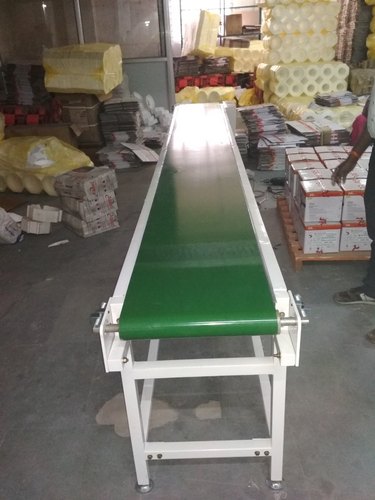
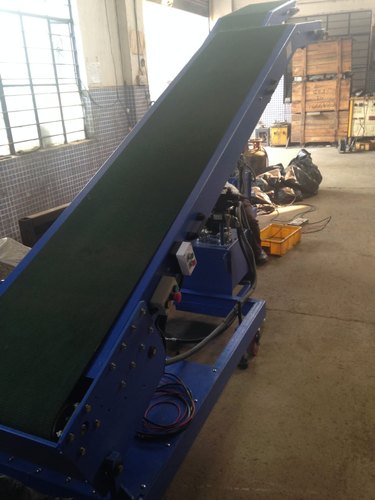
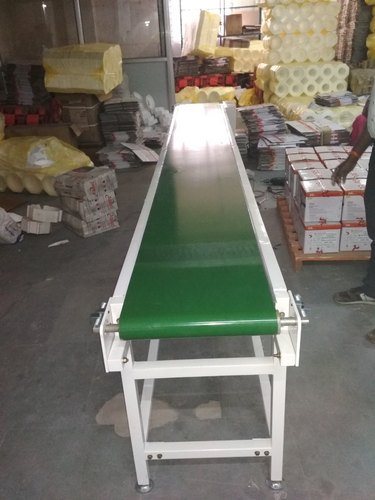
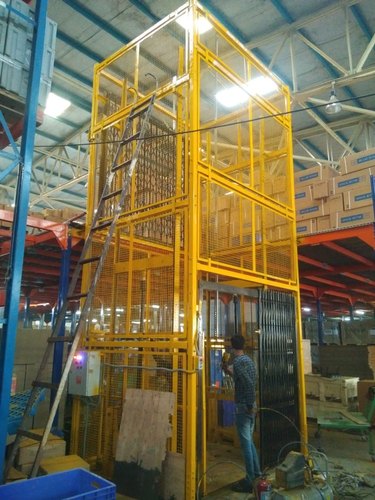
FREQUENTLY ASKED QUESTION
An elevator and a conveyor are two different types of equipment used for material handling and transportation, with some key differences in their design and functionality.
An elevator is a vertical lifting device that is used to move people or goods between different floors or levels of a building. Elevators typically have a cab or platform that is supported by a system of cables or hydraulic pistons and are used for transportation of people or goods.
A conveyor, on the other hand, is a horizontal or inclined system used to transport materials or goods from one location to another. Conveyors can be belt or roller-based and are designed to move items along a specific path, either manually or automatically.
Overall, the main difference between an elevator and a conveyor is their orientation and the type of movement they provide. Elevators are primarily used for vertical transport while conveyors are used for horizontal transport. Additionally, elevators are designed to transport people or goods between floors while conveyors are used to transport goods within a facility.
Conveyor takeup refers to the process of adjusting the tension of a conveyor belt in order to maintain proper tension and alignment. This is typically achieved using a mechanical device such as a pulley system or tensioning device located at the end of the conveyor system. The purpose of conveyor takeup is to prevent slippage or excessive stretching of the belt, which can lead to operational problems and reduce the lifespan of the equipment.
A conveyor is a mechanical device used to transport materials from one point to another in a continuous manner. It typically consists of a belt, chain, or other type of flexible material that is driven by a motor and supported by rollers or other devices. There are several different types of conveyors, including:
Belt conveyors: These are the most common type of conveyor and use a continuous loop of material, typically made of rubber, to transport goods.
Roller conveyors: These use a series of rollers to move materials, and are often used in warehouse and distribution settings.
Screw conveyors: These use a rotating screw or auger to move materials, and are often used in agricultural and industrial applications.
Pneumatic conveyors: These use air pressure to move materials through a series of tubes or pipes.
Vibrating conveyors: These use vibrating motors to move materials along a trough or other structure.
Magnetic conveyors: These use magnetic fields to move materials along a conveyor belt.
Bucket conveyors: These use a series of buckets or containers to move materials along a conveyor, and are often used in the food industry.
The specific type of conveyor used will depend on the type of materials being transported, the distance they need to travel, and other factors such as speed, capacity, and the environment in which the conveyor will be used.
Conveyor lifting refers to the process of raising or lowering materials as they move along a conveyor system. There are several different types of conveyor lifting mechanisms, including:
Incline conveyors: These are conveyor systems that are angled or inclined, allowing materials to be lifted from a lower level to a higher level.
Vertical conveyors: Also known as “lifts” or “elevators,” these systems use a series of platforms, buckets, or other lifting mechanisms to move materials vertically.
Spiral conveyors: These use a spiral-shaped conveyor belt to move materials vertically or horizontally, often in a continuous loop.
Pneumatic conveyors: Some pneumatic conveyor systems use air pressure to lift materials and transport them through a series of tubes or pipes.
